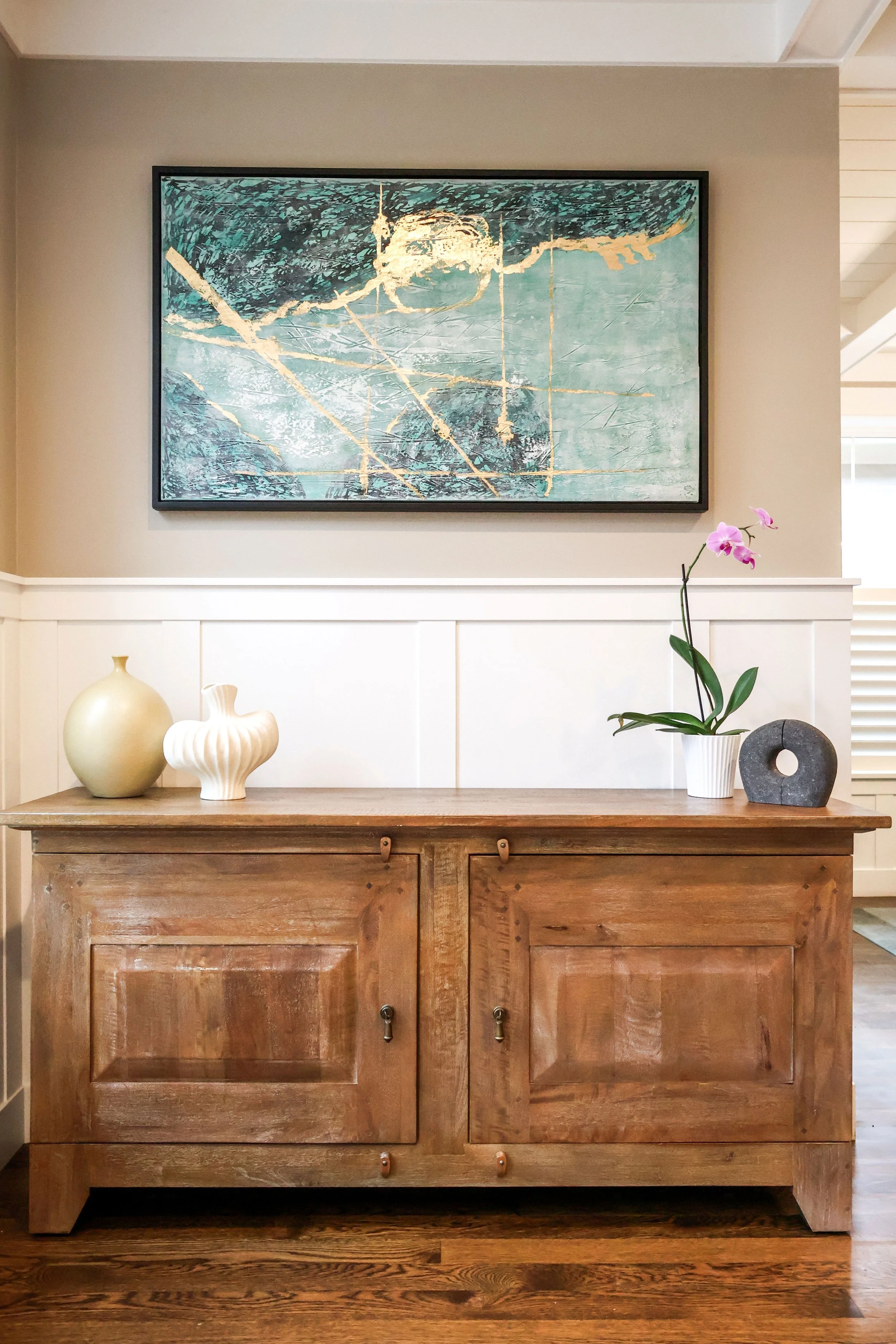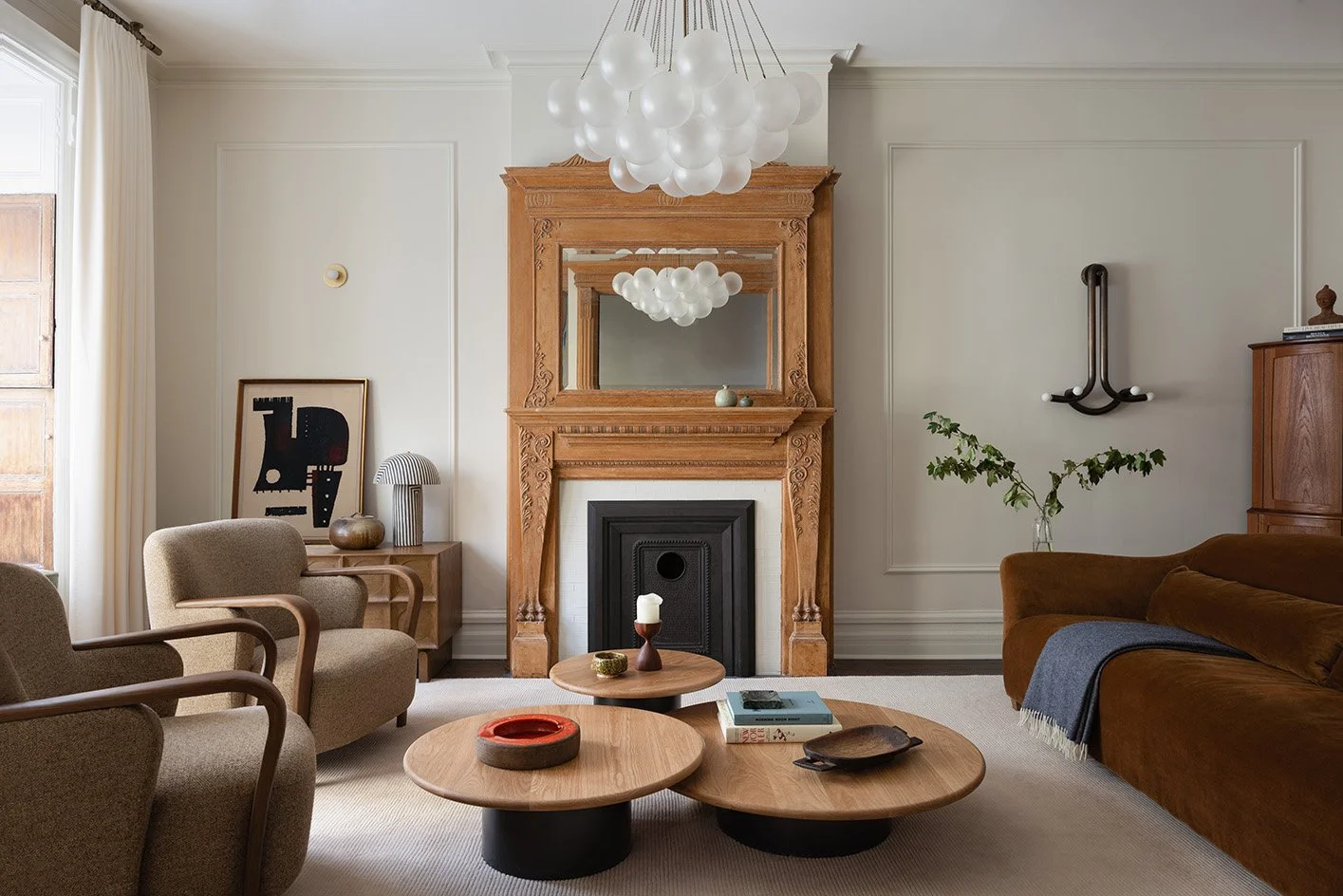Time in Layers: How to Blend Old and New with Grace
Design is not about erasing the past. It’s about layering time with intention. A meaningful space welcomes both history and innovation. This could mean placing a carved antique cabinet next to a sculptural modern light. Let contradiction become composition. Mix materials with different stories. Let patina coexist with polish. Use vintage textiles alongside clean architectural lines. This creates tension, and tension creates depth.
Blending old and new in interior design is more than a stylistic choice, it’s a way to craft spaces that feel layered, personal, and alive. Modern furniture provides clarity and function, while antiques and vintage pieces add authenticity, nostalgia, and emotional depth. Together, they tell a story that is uniquely yours.
The Psychology of Antiques
Antiques aren’t just decorative; they are psychological anchors that enrich a home beyond aesthetics. Handcrafted or vintage items carry a sense of genuineness. Their imperfections, patina, and craftsmanship add richness and meaning that modern pieces alone cannot replicate. Objects with history evoke nostalgia, lifting mood, easing stress, and creating continuity between past and present. Heirlooms, travel finds, or vintage decor connect us to memory, culture, and identity.
Incorporating antiques also fosters a sense of identity and belonging. Family pieces or items with heritage root a space in personal or cultural history, making a home feel uniquely yours. Beyond meaning, antiques provide aesthetic depth. Humans are naturally drawn to “ordered complexity,” and the layered textures, varied materials, and craftsmanship of older pieces make a room visually engaging. Finally, antiques satisfy a craving for permanence. In a world of disposable furniture, they symbolize durability and stability, anchoring both the eye and the spirit.
While these meaningful pieces bring emotional depth, they only shine when arranged thoughtfully, a consideration we explore in the next section: balance.
Achieving Balance with Old and New
Even the most treasured pieces only reach their full impact when the room feels balanced. Balance in interior design is about distributing visual weight so a space feels comfortable, cohesive, and intentional. Symmetry creates calm and stability, like matching chairs flanking a console or fireplace, while asymmetry adds energy and modernity, such as a tall antique armoire balanced by a grouping of smaller contemporary furniture. Each object carries “visual weight” influenced by size, color, texture, and placement, so a heavy antique can be offset with lighter modern pieces nearby.
Rhythm and flow guide the eye across a space. Repetition of colors, shapes, or textures can tie old and new elements together, such as repeating a color from an antique rug in modern cushions or artwork. Proportion and scale also matter. Furniture and decor should feel comfortable within the room and in relation to one another; a small vintage side table paired with a modern sectional can feel intentional and dynamic.
With balance in mind, layering these pieces intentionally transforms a room from a collection of objects into a cohesive and harmonious narrative.
Layering Time Intentionally
Layering is about more than juxtaposition; it’s about creating a story through thoughtful selection. When choosing pieces, prioritize meaning over mere age. Antiques or vintage finds that resonate emotionally, heirlooms, travel treasures, or objects with stories, enrich a space in ways purely decorative items cannot.
Mixing scales and sizes adds visual interest. Pair large statement antiques with smaller modern pieces, or delicate vintage objects with bold contemporary furniture. Varying scale keeps the eye engaged and maintains harmony. Materials and textures add another layer of depth. Combining patina with polish, wood with metal, or vintage textiles alongside sleek modern lines allows contrasting elements to coexist in dialogue.
Architectural details, whether original moldings, beams, or fireplaces, can be emphasized to reinforce a sense of history. When necessary, recreating historical touches such as wainscoting, vintage-style tiles, or classic light fixtures anchors antique pieces and makes modern design feel grounded. Incorporating these elements also promotes sustainability: using existing, well-crafted pieces reduces waste and celebrates materials built to last. By layering thoughtfully, you honor the past while designing responsibly for the future.
Grace in Blending
Grace in design is about harmony, cohesion, and flow. It allows contrasts to exist without conflict. Repeating colors, materials, or textures across eras helps tie the space together, while negative space gives statement antiques and modern pieces room to breathe. Differences in style, scale, or texture create tension that feels intentional rather than chaotic. Graceful design does not force old and new to match, it allows them to complement each other, forming a conversation across time.
Through grace, your home can feel both dynamic and cohesive, rich in texture and story, without ever feeling cluttered or staged.
A Home That Tells a Story
A layered home doesn’t feel like a museum. It feels alive, evolving, and personal. A carved antique cabinet beside a sculptural modern lamp, vintage textiles paired with crisp architectural lines, or a restored heirloom alongside contemporary furniture creates both tension and harmony. By blending old and new thoughtfully, you honor history without being constrained by it.
Every object contributes a chapter. The space becomes a story of family, heritage, travels, and life lived, while embracing innovation and modernity. Next time you bring an antique or heirloom into your home, consider how it converses with modern pieces, your home becomes a narrative, layered in time and alive with meaning.
Design is not about erasing the past. It’s about layering time with intention. That’s good design. That’s Kali-Lu Interiors.











